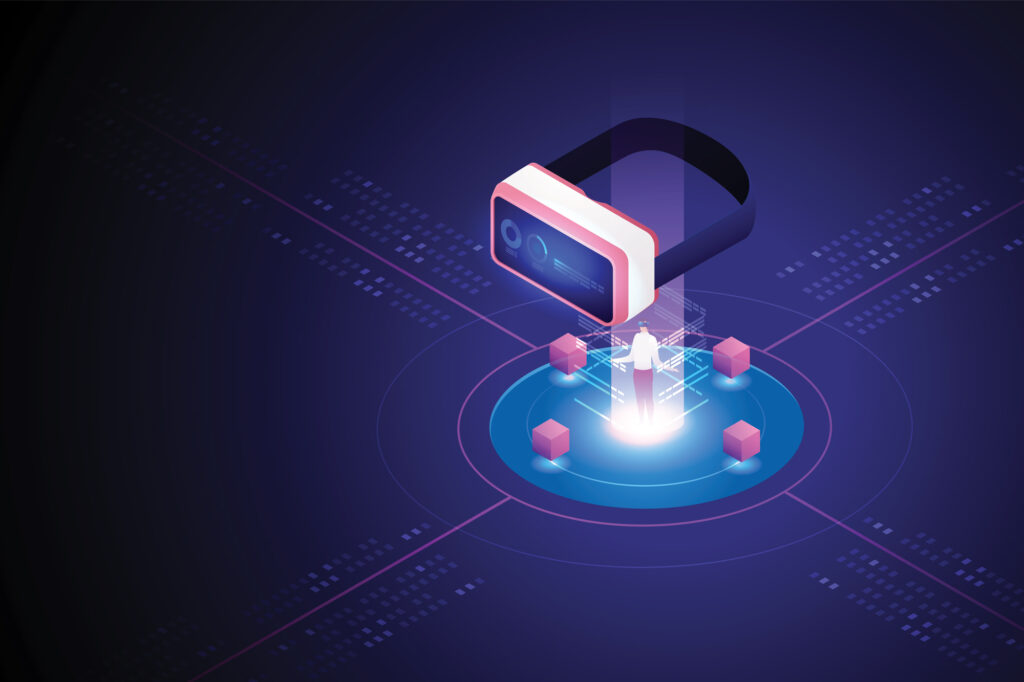From the internet age to the move into remote working, the past few decades have seen every company swiftly become a technology company. But now, things are about to shift yet again: Every company is soon going to become a 3D company, too.
This has never been more evident than at this year’s AWE conference. Read on below to discover the key insights we uncovered from the show, including a rise in demand for 3D artists, how better hardware will improve VR experiences, and our future in the metaverse.

1. Virtual Events Are on the Rise
Imagine launching your next car design, and having everyone be able to drive it in photoreal VR. Or training new engineers in a virtual world where they can test concepts without any risk. Or hosting a company concert in Fortnite where employees can actually meet their favorite musicians as avatars.
With virtual events, all this — and more — is possible. It’s no wonder that at this year’s AWE conference we noticed a lot of interest in the subject. Brands are increasingly looking for new ways to innovate and engage with their customers, and service providers are popping up to meet that demand. The best part: It’s not just fully-virtual events that will benefit from these virtual technologies. For hybrid events, the same 3D models or in-game experiences could be displayed as AR elements on everyone’s mobile phones. That means all attendees can see and explore the same new products or experiences, all in real time.

2. Hardware Is Catching Up
We’ve come a long way from the first Oculus Rifts! This year’s AWE involved a huge number of hardware providers, including many specializing in VR headsets and haptic technologies that are getting more accessible and user-friendly than ever before.
We saw haptic gloves that let you feel the friction of a surface in VR; hand tracking tech that didn’t require any wearables; and plenty of headsets that featured advanced optical designs so users could experience a whole new level of resolution and visual fidelity — including improved brightness and impressive edge-to-edge fields of view. In the future, we see these technologies becoming a staple for most brands.

3. The Metaverse Isn’t Just a Fad
The metaverse may seem like nothing more than the tech industry’s latest buzzword, but according to CEO of Unity John Riccitiello, it can and will change the internet for good. In his AWE opening speech, he explained that one of the reasons some of us may not yet be sold on the metaverse is simple: The industry still has to truly define it.
Though plenty of definitions of the metaverse have been offered, Riccitiello explained that to him, the metaverse should be defined as the next generation of the internet, one that is:
- Almost always real time
- Mostly 3D
- Mostly interactive
- Mostly social
- And mostly persistent
In his speech, he predicted that the majority of websites will meet this definition by the end of the decade. That means that buying something online will no longer feel like seeing products on your screen — it’ll feel like you’ve gone somewhere else entirely. For brands, now is the time to dream big and start experimenting in this space, so you can begin to understand it before you fall behind.

4. The World Desperately Needs More 3D Artists
As the metaverse continues to create new demand for 3D content, the big question on everyone’s mind is: Who will create all this content? At AWE, we noticed a lot of commentaries focused on the need for faster 3D content creation, but not a lot about exactly how this content will be made. While AI model generation, scanning, and our extensive library of 3D stock models mean you don’t have to start from scratch, we’ll still need more 3D artists than ever to make each visual unique.
After all, the 3D industry is set to expand into more verticals than ever before: it will no longer just be for games or VFX, but for everything from architecture to training, live events, and e-commerce. As brands begin to build integrated campaigns with NFTs and virtual experiences, the best artists will be highly sought after to bring ideas to life.

5. 3D Standards Need to Improve
Hiring artists and building your 3D library is just the beginning. Speaking at AWE, Shutterstock VP of 3D Innovation Dade Orgeron explained that in order to prepare for the virtual future, it’s also crucial to get 3D libraries under control by using standardization and automation.
Standardization
Right now, 3D models come in a variety of formats, many of which depend on the software they were created in. For the future, we need to standardize these 3D formats into one ‘universal’ file that can work anywhere from the digital shelf all the way to your metaverse experiences. That means you can build your model once, and distribute it everywhere, safe in the knowledge that it will always look the same. We’re starting to already on the road to making this a reality through StemCell. See what we’ve done so far here.
Automation
There are also things you can automate or semi-automate that can simplify the process of distributing your 3D content into different platforms. AI and automation tools can help by automatically organizing things like metadata and even reducing model complexity for web display or AR experiences. Our digital asset management platform, Kraken, can help with this.
Want to learn more about our experience at AWE? Sign up and watch the recording of Dade’s presentation here.

